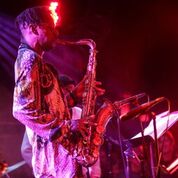The first Jazz Congress co-hosted by Jazz at Lincoln Center and JazzTimes magazine Jan 11 and 12, 2018 and the 14th annual Winter JazzFest Marathon produced in downtown Manhattan Jan 12 and 13, offered contrasts and prompted crosstalk. It wasn’t like these were conventions of different parties, but different narratives were going down. The Congress’s sessions […]
Is NYC (still) capital of jazz?
The early January concurrence of the Jazz Connect conference, the annual convention of APAP (Association of Performing Arts Presenters), Global Fest and Winter JazzFest makes a good case for Manhattan being the capital of jazz-and-beyond. It’s inarguably true that creative sound-organizing with improvisation and rhythm is world-wide, and our native version — jazz and its derivatives […]
Jazz conventions, conferences, celebrations, memorial Jan 6 – 11
The jazz world convenes in two U.S. cities this weekend, as high school and college bands + directors gather at the JEN Conference in New Orleans, jazz presenters focus themselves at the APAP convention in New York City and jazz journalists get together on topics vital to better and continued music coverage at the JJA’s […]
Jazz journalism & beyond weekend
Jazz journalists conferenced in New York City last weekend as arts presenters, National Endowment for the Arts Jazz Masters and musical showcases galore (including an audience-happy Winter Jazzfest and the debut of drummer Jack DeJohnette‘s hot new band) justified the very existence of the profession.
Parameters of jazz now
The Winterjazzfest held at three venues in Greenwich Village last Saturday, a smorgasbord of almost two dozen acts offered up to attendees of the Association of Performing Arts Centers conference, gave a hint of some sounds to be heard around the U.S. in the months to come. What I witnessed was diverse, engaging, virtuosic but […]


